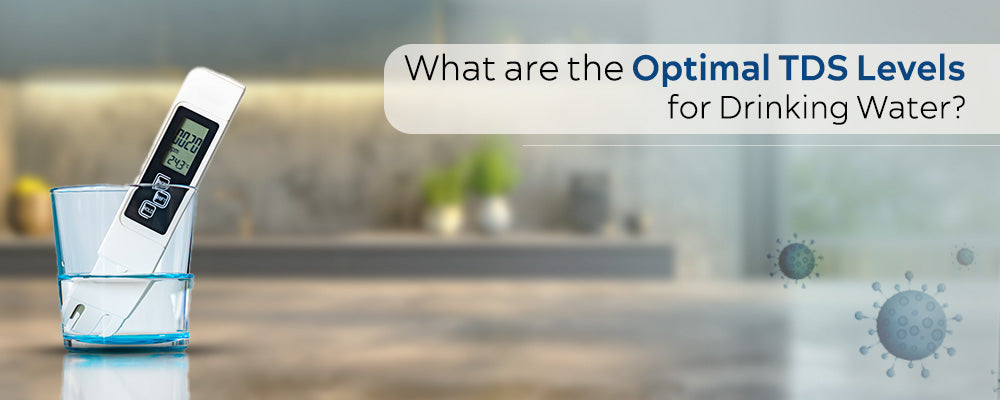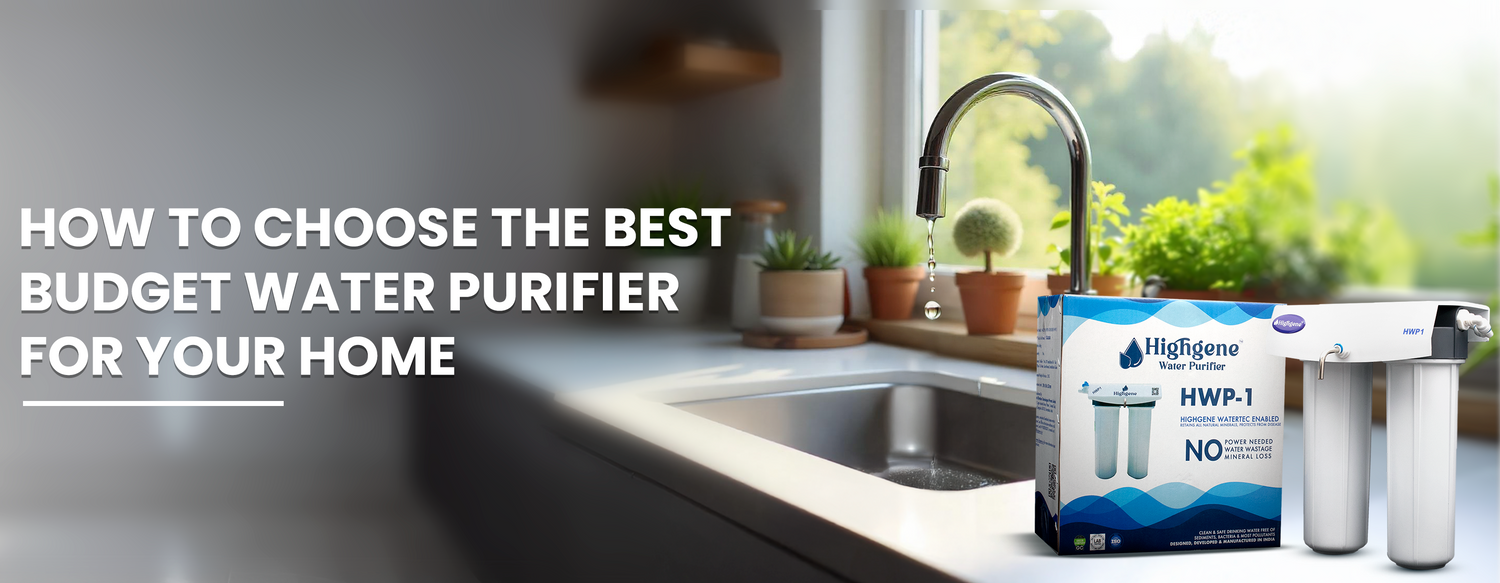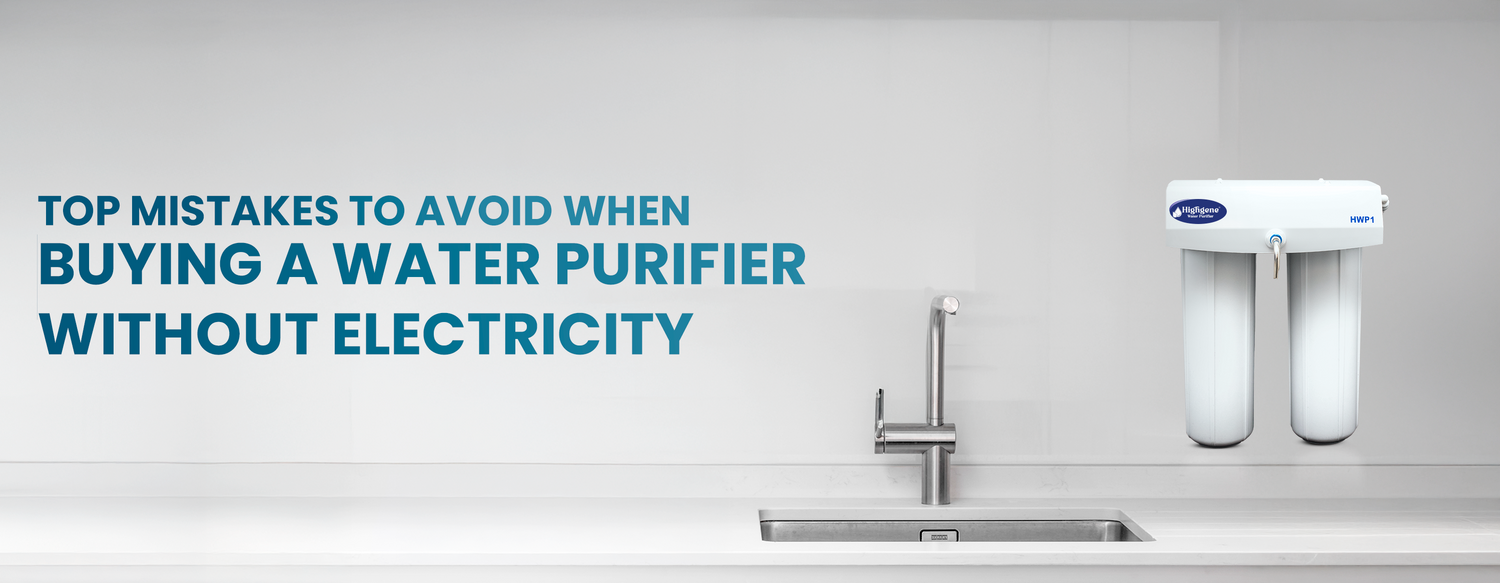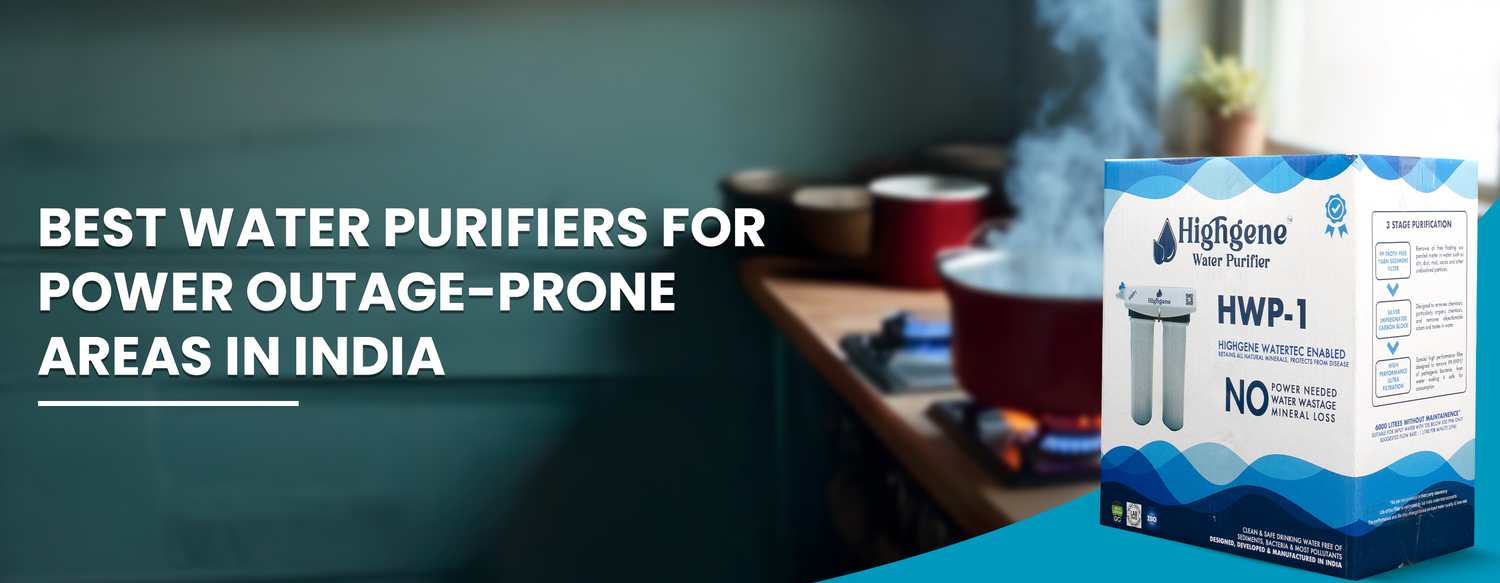It is important in today’s world to ensure that you are consuming safe and clear water. We often receive water containing harmful chemicals from water treatment plants that remove the natural minerals from the water required for health. There are many ways to test the quality of the water, but the most common way to do so is by measuring its Total Dissolved Solids (TDS) levels.
In this blog, we will understand TDS in-depth and safe TDS levels for drinking water.
What is TDS of Drinking Water and What Does It Indicate About Water Quality?
Water usually passes through different surfaces, including stones and pipes, before it reaches our homes. This process affects the TDS of drinking water, as various substances like metals, salt, sulphur, and minerals dissolve along the way. While some of these particles are beneficial, high drinking water TDS levels indicate the presence of harmful chemicals and contribute to an unpleasant taste. Monitoring the TDS of drinking water is important to ensure it remains within a safe range for consumption.
How is TDS for Drinking Water Measured and What Does it Mean?
We can measure the TDS for drinking water in multiple ways. Some of them are:
-
Using a TDS meter: High TDS in water can mean that it is contaminated with ions, a group of atoms that can have a positive or negative electric charge. Because of that, we need a metallic device to measure the conductivity of water. This is where a TDS meter comes in. It is a small device with metal probes that release electric current in the water and generate a reading, helping to assess the TDS for drinking water.
-
Using a filtration technique: This technique involves weighing the residue after using filter paper to collect the residue from the water by passing it through. Then, the TDS level for drinking water is calculated using the following formula:
TDS level = (Final weight – empty evaporating dish weight) x 1000. -
By a conductivity meter: Water with high ions means that it is electrically charged. A conductivity meter tests the resistance of water to conduct electricity. If there is low resistance, it means that the water has high TDS for drinking water, indicating the presence of dissolved solids.
Also Read: Understand Industrial Water Purification System
Best TDS Level for Drinking Water – What’s Safe and Recommended
According to the Bureau of Indian Standards (BIS), an acceptable TDS level for drinking water is 500 ppm. However, the World Health Organization recommends a TDS level of less than 300 mg/L for drinking water, which is often considered the recommended TDS for drinking water to ensure safety and quality.
In any case, it is safe to consider 50 ppm as the minimum TDS level, as anything below that would mean the water lacks essential minerals. The best TDS level for drinking water depends on factors like source quality and mineral content, but maintaining a balanced range helps in preserving both health benefits and taste.
Drinking Water TDS Range – Safe Limits & Acceptable Levels
According to the TDS chart, there are levels of TDS in water that make it safe for drinking, as well as levels that are completely unacceptable for consumption. Between the two, the drinking water TDS range varies from being slightly contaminated—causing laxative effects—to being unsuitable for regular drinking.
Having said this, the drinking water TDS range that is generally considered safe by most organizations is between 50 ppm and 500 ppm. While water below 50 ppm might lack essential minerals, water above 500 ppm may contain excessive contaminants, making it unsafe for consumption.
For daily use, the ideal drinking water TDS range is below 500 ppm, ensuring both safety and essential mineral content.
According to the TDS chart, there are levels of TDS in water that make it safe for drinking, as well as levels that are completely unacceptable for consumption. Between the two, the water varies from being slightly contaminated, causing laxative effects, to not being suitable for regular drinking.
Level of TDS in Drinking Water – How Does It Impact Health?
Water with a level of TDS in drinking water between 50 ppm and 500 ppm is generally considered safe for consumption. However, when the TDS level exceeds the recommended range, it may pose potential health risks.
-
Falling Sick: A high level of TDS in drinking water may indicate the presence of heavy metals like lead or copper, which can cause health issues.
-
Taste Buds: Ideally, water should be tasteless, but an elevated level of TDS in drinking water can make it salty, metallic, or bitter, affecting its palatability.
-
Health Conditions: Water with excess TDS often contains high salt content, which may contribute to kidney stone formation and, in some cases, affect cardiovascular health.
-
Gastrointestinal Problems: When the TDS level is too high, the excessive minerals may lead to stomach discomfort, nausea, or diarrhoea.
Monitoring the level of TDS in drinking water is essential to ensure safe consumption and prevent potential health risks.
How to Control Water TDS Level for Safe Drinking Water?
With the numerous ways in which consuming water with the wrong water TDS level can affect your health, it is crucial to find ways to adjust it and make it safe for everyday use. Here are some methods:
Reverse Osmosis (RO) System
This process helps lower the water TDS level by passing water through a semipermeable membrane with tiny holes that allow only molecules smaller than 0.0001 microns to pass through. This is smaller than salt particles, which get blocked along with other metal particles, making the water safer. However, it can lead to water wastage.
Distillation
In this process, water is boiled, and the vapour is collected before being condensed back into liquid form. Since contaminants like salt and heavy metals do not vaporize, they get separated, lowering the water TDS level naturally.
Ion Exchange
This technique uses ion-selective membranes to separate positive ions, directing them toward a negative electrode. The result is deionized water with high purity. However, it is often combined with reverse osmosis to remove non-ionic organic contaminants.
Introduction to devices and filters that can control TDS.
There are several devices and filters designed to regulate the water TDS level effectively:
-
TDS Controller: This device helps in adjusting the TDS level after RO filtration, ensuring that essential minerals are retained while excess dissolved solids are removed.
-
Activated Carbon Filter: This filter traps impurities like dissolved minerals, organic compounds, and chlorine, improving water taste, odor, and clarity. However, it is less effective at removing dissolved salts and minerals compared to RO or deionization systems.
Conclusion
Understanding the ideal water TDS level is essential for ensuring that you and your family consume safe water. While individual needs may vary, maintaining a TDS range between 50 ppm and 500 ppm in India is generally recommended. By using the methods and filtration systems mentioned, you can adjust the TDS level of your water for better health benefits and improved taste.
Frequently Asked Questions
1. What is the best TDS level for drinking water?
The best TDS level for drinking water depends on various factors, including mineral content and taste preferences. According to global health standards, a TDS level between 50 ppm and 500 ppm is considered safe for consumption. Water with TDS below 50 ppm may lack essential minerals, while water exceeding 500 ppm may contain impurities that affect health.
2. What is the ideal drinking water TDS range?
The ideal drinking water TDS range generally falls between 50 ppm and 500 ppm, as per recommendations from the Bureau of Indian Standards (BIS) and the World Health Organization (WHO). While water with TDS lower than 50 ppm may be free from contaminants, it can also lack beneficial minerals. On the other hand, a higher TDS level may affect taste and indicate the presence of unwanted dissolved solids.
3. What is the recommended TDS for drinking water?
The recommended TDS for drinking water varies depending on health standards. According to WHO, a TDS level of less than 300 mg/L is considered ideal for drinking water, as it provides a balance between safety and mineral content. However, the BIS allows a TDS level of up to 500 ppm, considering it safe for regular consumption.
4. Is 4000 TDS water safe for drinking?
No, a TDS level of 4000 ppm is not safe for drinking. Water with such a high TDS level is likely to contain excessive salts, heavy metals, and contaminants that can be harmful to health. Safe drinking water TDS range is generally below 500 ppm, and anything beyond 1200 ppm is considered unsafe for human consumption.
5. What is the level of TDS in drinking water that is safe?
The level of TDS in drinking water that is safe is typically within the range of 50 to 500 ppm. Water below 50 ppm may lack essential minerals, while water above 500 ppm may have unwanted impurities that affect its safety and taste. Monitoring the water TDS level ensures that it remains within a healthy range for daily consumption.





